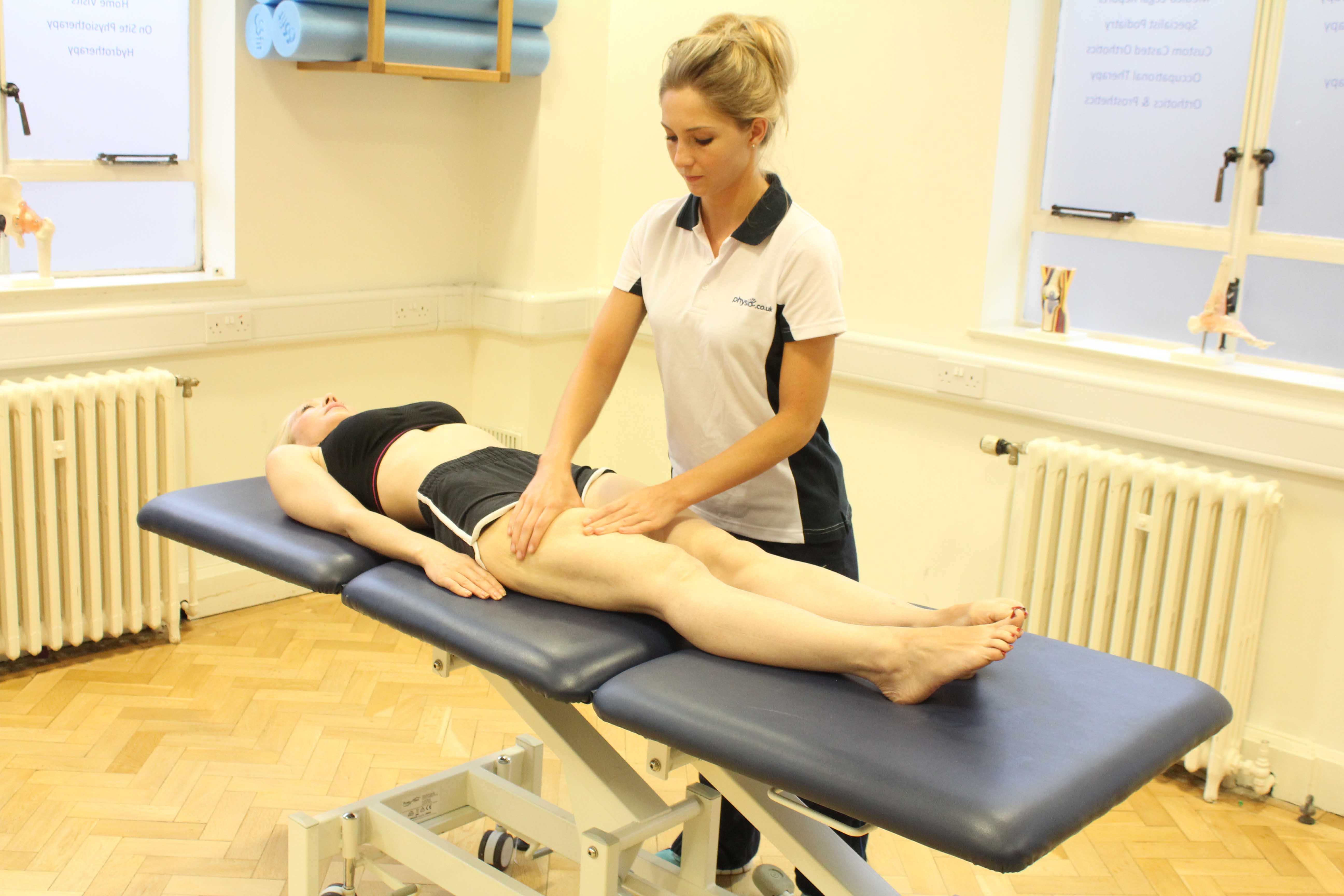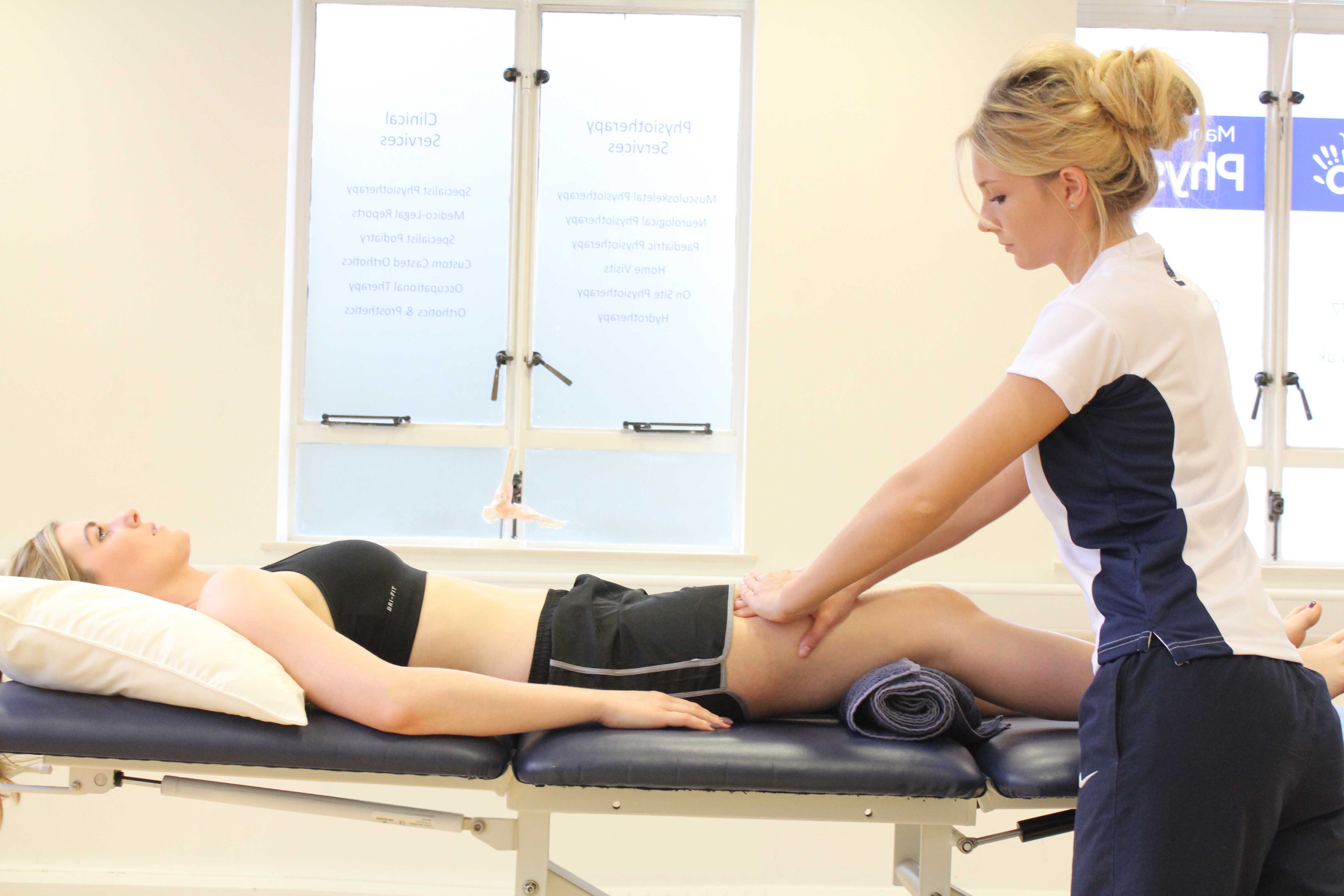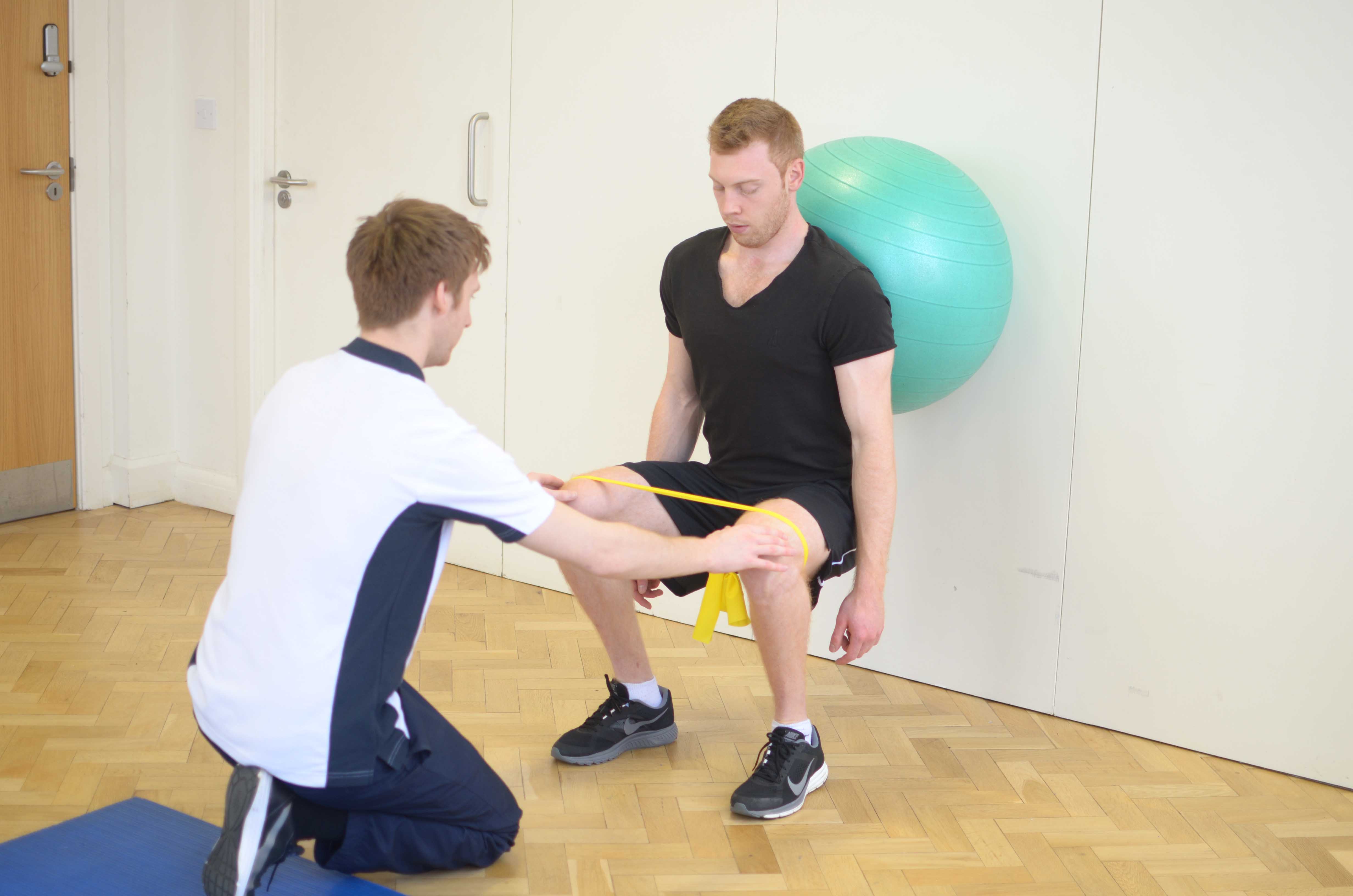What is an avulsion fracture of the ischial tuberosity?
The ischial tuberosity is the bone in the buttock from which the hamstring muscle group (the muscles on the back of the thigh) originate. The ischial tuberosity is also the bony point of the bottom that we sit on. An avulsion fracture of the ischial tuberosity is when a small piece of this bone is pulled away from the rest of the pelvis bone. This injury is most commonly seen in adolescent athletes. Physiotherapy is important following an avulsion fracture of the ischial tuberosity.
 Above: Soft tissue massage of the hamstring muscles by experienced therapist
Above: Soft tissue massage of the hamstring muscles by experienced therapistHow does an avulsion fracture of the ischial tuberosity happen?
The large muscle group on the back of the thigh (hamstrings) attach to the pelvis bone at the ischial tuberosity. Repeated strong contractions of the hamstring muscle group can cause the piece of the ischial tuberosity to which the hamstrings attach to be pull away from the rest of the bone.
 Above: Rolling soft tissue massage of the quad muscles by experienced therapist
Above: Rolling soft tissue massage of the quad muscles by experienced therapistWhat are the symptoms of an avulsion fracture of the ischial tuberosity?
An avulsion fracture of the ischial tuberosity causes pain deep in the lower part of the buttock. This pain occurs suddenly and is usually strong enough to stop you from participating in sport. Other symptoms can include:
What should I do if I have an avulsion fracture of my ischial tuberosity?
If you suspect that you have an avulsion fracture of the ischial tuberosity you should begin initial treatment. This should consist of rest and ice. Rest involves ceasing to participate and limiting the amount of weight you put through the injured leg. You may require the use of crutches if you are having difficulty walking. Ice should be applied to the injured site for 15–20 minutes every 1–2 hours using frozen peas or crushed ice wrapped in a damp cloth. You should continue resting and icing until your initial physiotherapy assessment, preferably within two days of the initial injury.
 Above: Soft tissue massage of the quadricep muscles by a specialist MSK therapist
Above: Soft tissue massage of the quadricep muscles by a specialist MSK therapistPhysiotherapy treatment for an avulsion fracture of the ischial tuberosity
Physiotherapy is very important in the treatment of an avulsion fracture of the ischial tuberosity. Initially, you physiotherapist determine the tissues that have been damaged and the extent of the damage. Your physiotherapist will also give you an estimated timeframe for recovery and devise an appropriate treatment plan. Treatment may involve:
Could there be any long term effects from an avulsion fracture of the ischial tuberosity?
Avulsion fractures of the ischial tuberosity normally heal fully within a number of weeks and do not cause long-term effects if they are appropriately treated.
 Above: Progressive quadricep strengthening exercises supervised by specialist MSK therapist
Above: Progressive quadricep strengthening exercises supervised by specialist MSK therapistTo arrange a physiotherapy assessment call Physio.co.uk on 0330 088 7800 or book online.

 0330 088 7800
0330 088 7800


































